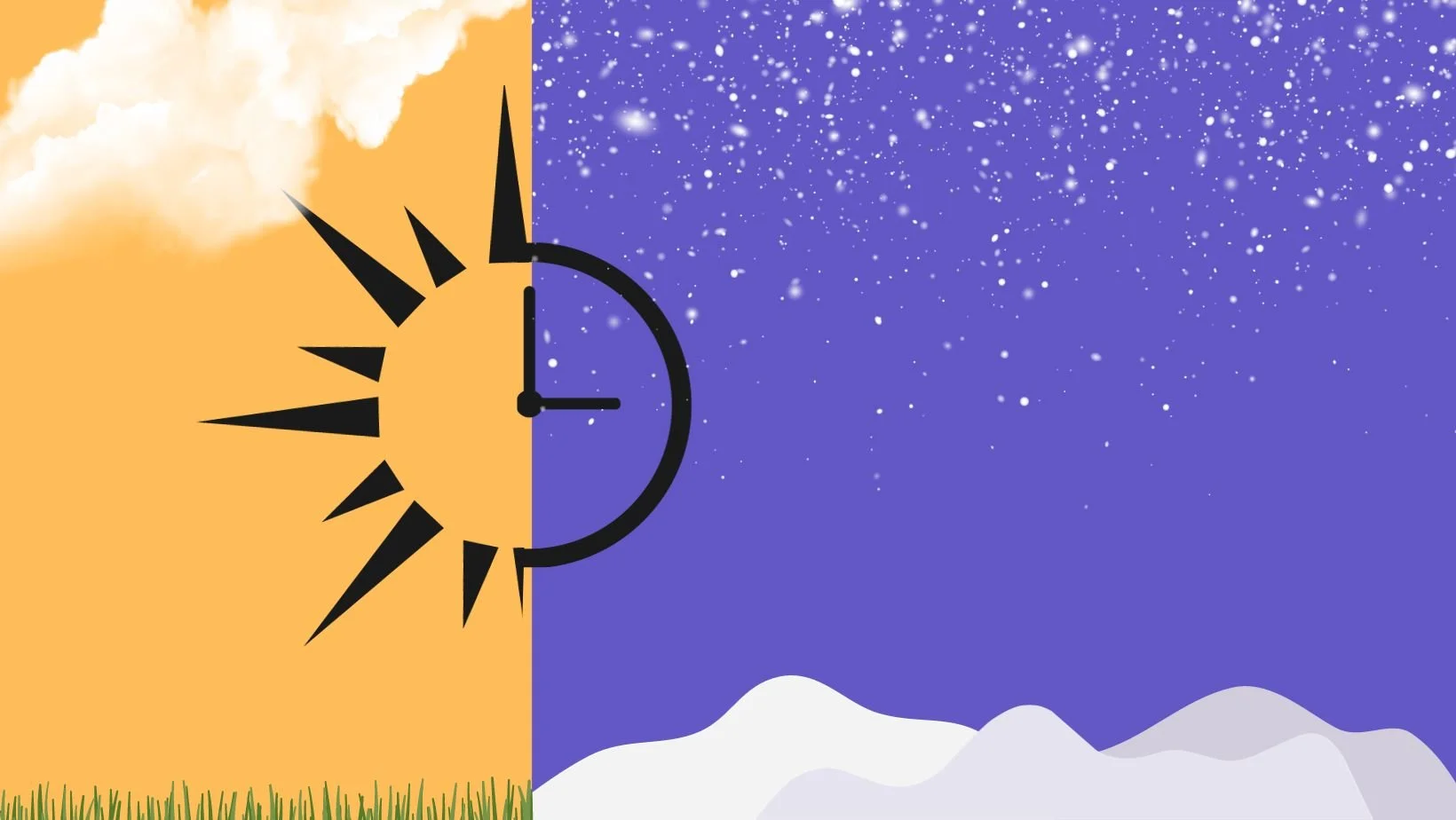Climate change and seasonal affective disorder
Illustration by Anika Besst
By Anika Besst
The winter months bring a flood of holidays, emotions and weather changes, and for some, the cold weather and shorter days can spark seasonal affective disorder.
Sometimes referred to as SAD or seasonal depression, seasonal affective disorder is a mood disorder occurring at the same time each year that impacts about 5% of adults.
Research shows that the closer you are to the equator, the less likely you are to experience SAD. It is not known exactly why this is, but one theory is that the body's internal clock is affected by the reduced levels of sunlight in places farther from the equator during the winter months. This may change the body’s levels of serotonin and melatonin, which can affect mood and sleep.
Symptoms of SAD include fatigue or decreased energy, a sad or anxious mood, loss of interest in things you enjoy, changes in sleep or appetite, irritability, or, in some cases, thoughts of death and suicide.
While SAD is most associated with winter, the heat and humidity of the summer months can also bring on a gloomy mood called summer-pattern SAD or summer depression.
How might climate change impact SAD?
In the 2000s, American psychologists noted a growing number of patients were frightened by the climate crisis. They began to call this “eco-anxiety” or “climate anxiety” to describe the stress of climate change and its existential and environmental consequences, but this is not the only way climate change poses a risk to our mental health.
Climate change can cause unpredictable changes as it gets colder, darker, and harder to get outside in the winter, or as it gets hotter and more humid in the summer. And for some, this rise in temperatures and increase in pollen can worsen mental health, research shows.
It was found in a 2018 report looking at the U.S. and Mexico that as temperatures rose, so did suicide rates. By using data from multiple decades, this research found that for a 1°C increase in monthly average temperature, suicide rates rose 0.7% in U.S. counties. Higher temperatures are also linked to an increase in aggressive behavior and depressive language.
Climate change also impacts nutrition, infectious diseases and air pollution, which all play into our mental health, says the American Psychiatric Association.
Overcoming these changes
Many of the same approaches used to treat depression are used to treat SAD including antidepressants, psychotherapy (especially cognitive behavioral therapy), and light therapy. It is important to talk with a therapist or doctor about your symptoms to determine the best treatment plan.
It is believed that light therapy can offer relief from SAD by combatting the changes to your circadian rhythm through simulating outdoor light. Being in front of a light therapy box in the morning can increase your wakefulness during the day and lift your mood through causing a chemical change in the brain.
Experts also suggest exercising, going outside, eating a nutritious diet, getting the recommended amount of sleep for your age, and staying social.
“I don’t know what it is about seasonal depression that people tend to try to go it alone,” Kelly Rohan, professor at the University of Vermont, told the Washington Post. “Depression is a serious mental health issue. We wouldn’t try to figure out and treat our own cardiovascular issue or cancer.”
While it is not always easy to do, finding positive associations and beauty in the seasons is also a great place to start and can help us to appreciate nature and all it still offers.

